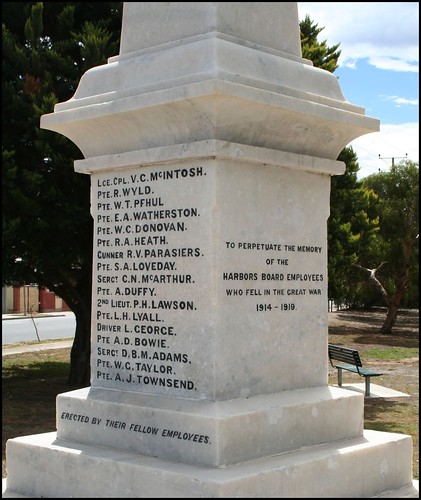‘An upright, sterling character’ Sergeant Douglas Bernard Matthew Adams, 10 Battalion, AIF
c March 1915. Sergeant Douglas Bernard Matthew Adams, D Company, 10 Battalion, AIF. Photograph taken just prior to embarkation for service abroad.
During my first visit to Gallipoli in May 1996, in Beach Cemetery I chanced upon a grave of a 10th Battalion digger who had been a sergeant when he died of wounds at the age of 18 in early July 1915. The epitaph on the grave, “A bright young life sacrificed on the altar of duty. So dearly loved”, struck a chord with me, as I was only a few years older than he had been. I promised myself then never to forget him and to visit again when I could. The opportunity to return arose in May 2012, when I travelled to Gallipoli as part of a joint Australian War Memorial and Imperial War Museums study tour. The afternoon we arrived on Gallipoli, sixteen years to the day after my last visit, I was determined to find him and again pay my respects. Initially we stopped at Ari Burnu and visited the cemetery there before making our way south along the beach, then up into Beach Cemetery. It didn’t take long to find his resting place underneath the outstretched branches of the Judas tree at the bottom left of the cemetery as you look out to sea. The young man in question was Douglas Bernard Matthew Adams, born in 1897 at Alberton, Port Adelaide, South Australia, to Harry and Elsie Adams. Records reveal that he was educated at Port Adelaide primary school and then won a scholarship to Prince Alfred College. He was noted for his fine athletic ability, and as a cadet soldier reached the rank of second lieutenant. After his schooling Adams took up a position as a clerk with the South Australian Harbours Board, working from Outer Harbour, Port Adelaide. (At this point, I wondered if he had spent part of his weekends at Alberton or other grounds around Adelaide, watching the Port Adelaide Magpies terrorise the rest of the competition in the South Australian Football League. The Port Adelaide team were undefeated Premiers in 1914.) He enlisted for service in the AIF at Morphettville Racecourse on 10 December 1914, aged 18, and was posted with the rank of private to 4th Reinforcements, 10th Battalion. Promoted to sergeant in March, he embarked from Adelaide on 1 April aboard HMAT A17 Port Lincoln and reached Gallipoli on 5 June, where he was taken on strength of the battalion. At the time he arrived, the Battalion was holding the line on the southern end of the Anzac line around Silt Spur and he would have been involved in manning front line positions as well as taking part in carrying parties and other duties undertaken by the battalion both in the line and in support trenches. On 7 July, the 10th Battalion were resting behind the lines near Tasmania Post, when they came under Turkish artillery fire. Adams was struck in the head by shrapnel, suffering a compound fracture of the skull. He was transferred to 1 Australian Casualty Clearing Station, where he died a little while later, and was laid to rest in Beach Cemetery.

Corporal Reuben Weatherall, in a moving letter to his mother tells of the terrible pain he felt at the death of his mate and how he couldn’t face writing to Adams’s parents to let them know how their boy had died. Weatherall survived the war and returned to Australia in May 1919. The Roll of Honour circular filled out by Adams’s father, Harry, provides a glimpse of the pain the family were feeling at the loss of their boy, as well as their pride in what he had achieved in his all too brief life. This is especially evident in the circular’s biographical section, in which Harry stated that his son was “only an upright, sterling character”. In the aftermath of the First World War, the South Australian Harbours Board erected a memorial at Birkenhead to honour their fallen workers.
South Australian Harbors Board WWI Memorial
(Image used with kind permission of Jenny Scott) Like so many companies and organisations who had lost their workers and colleagues, this was one of the ways in which a working community could remember their fallen and also give the families a lasting place to commemorate their loved ones. For my own part, I do not know when next I’ll have the opportunity to return to Gallipoli, but when I do, I will be sure to visit Sergeant Douglas Adams. If I can, I will lay a sprig of wattle on his grave to fulfil a part of his great mate Reuben Weatherall’s wish.

